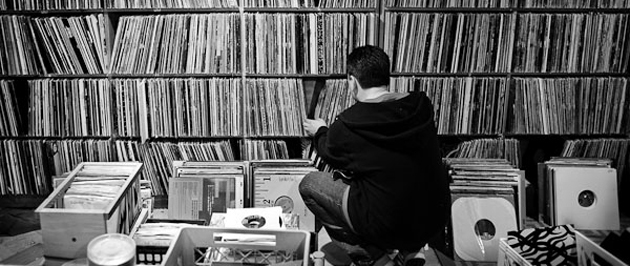 Repetition is no stranger to electronic dance music. Reoccurring themes pepper tracks, while loops lull familiar material over a 4/4 beat. Even with keys modulating, the pattern of intervals remains unchanged in a four-minute span.
Repetition is no stranger to electronic dance music. Reoccurring themes pepper tracks, while loops lull familiar material over a 4/4 beat. Even with keys modulating, the pattern of intervals remains unchanged in a four-minute span.
Yet, beyond the elements of individual tracks, repetition has seeped into another aspect of dance music – setlists. Multiple incarnations of Avicii’s mega-hit “Levels” echoed throughout Ultra Music Festival 2012, with the recognizable synth line and sampled Etta James vocals distorted to an acceptable point of creativity. Even at the recent All Mixed Up event at Pier 94, Sebastian Ingrosso and protégé Alesso frequently overlapped in their track selections. While “traditional” DJ Carl Kennedy opened with a bang and Otto Knows proved to be a climbing-high producer prodigy in spite of his mediocre effort “Million Voices,” Alesso and Ingrosso’s sets left the night with a deflated note: Haven’t we heard it all before?
 It’s not just the critics and concertgoers noticing constancy has swapped with creativity. Deadmau5, at the FutureSound conference in San Francisco, had the gall to call out the genre on it. Not content with calling his DJ Mag Top 100 peers “button pushers,” the Canadian producer renamed the genre “event-driven marketing” and discussed that such shows are more about production than actual music selection. He said, “A popular DJ is now heralded more for his production than his music selection.”
It’s not just the critics and concertgoers noticing constancy has swapped with creativity. Deadmau5, at the FutureSound conference in San Francisco, had the gall to call out the genre on it. Not content with calling his DJ Mag Top 100 peers “button pushers,” the Canadian producer renamed the genre “event-driven marketing” and discussed that such shows are more about production than actual music selection. He said, “A popular DJ is now heralded more for his production than his music selection.”
Is this true, or is the producer best known for wearing an LED mau5 head just giving us another broad, overly-general statement?
Phil Morse, at DigitalDJTips.com, makes a case in favor of production over a standard DJ mixtape. The ability to put together tracks, transition from one to the other, and beat match had its emergence and heyday with Sasha and John Digweed’s Renaissance: The Mix Collection in 1994 and then peaked in 2001 with Richie Hawtin’s Closer to the Edit, he argues. Replacing these once-difficult skills, even at the club gigs level, are mashups, which took off in the early ‘00s and still continue to matter, at least when it comes to getting club gigs.
“
If the mixtape is going the way of the turntable (and, no, not the newer kind with a built-in USB port), does this notion excuse DJs like Alesso and Ingrosso, who essentially mixed a handful of the same tracks in both of their setlists? For Guardian writer Clare Considine, a DJ’s still an entertainer and a crowd pleaser, no matter if he’s at a bar mitzvah or at Ultra’s main stage. While the latter has to contend with shorter sets, even relegated to 45 minutes, and the latter has to keep a group of bored 13-year-olds entertained, “wedding tracks” — “chipper pop songs, chock-full of vocals and nostalgia; a recognizable three minutes that can unify the crowd, lifting them from their deep house comas into collective, occasionally singalong euphoria” – get the crowd up and dancing. You’ve seen the phenomenon at festivals – usually with a Swedish House Mafia or David Guetta tune.

Yet, Considine argues, while the “wedding track” interests the audience but alienates purists, incorporating it into a set – 45 minutes or seven hours – is no easy feat. Here’s where those mashup skills come in handy, turning a stale, overly-familiar song into something original.
Multiple forces are at work in influencing the playlist. The entertainment and crowd factor, for starters, allows Alesso an Ingrosso to get away with playing “Calling” twice in an evening. The amount of mixing and modern expectations of innovation essentially give DJs the privilege to repeat themselves, as long as the track comes back differently each time.
Being a DJ, regardless of venue, is no longer about the tracks you select but, rather, what you can do with them. Do you agree that the “playlist as an art form” is on the way out?



